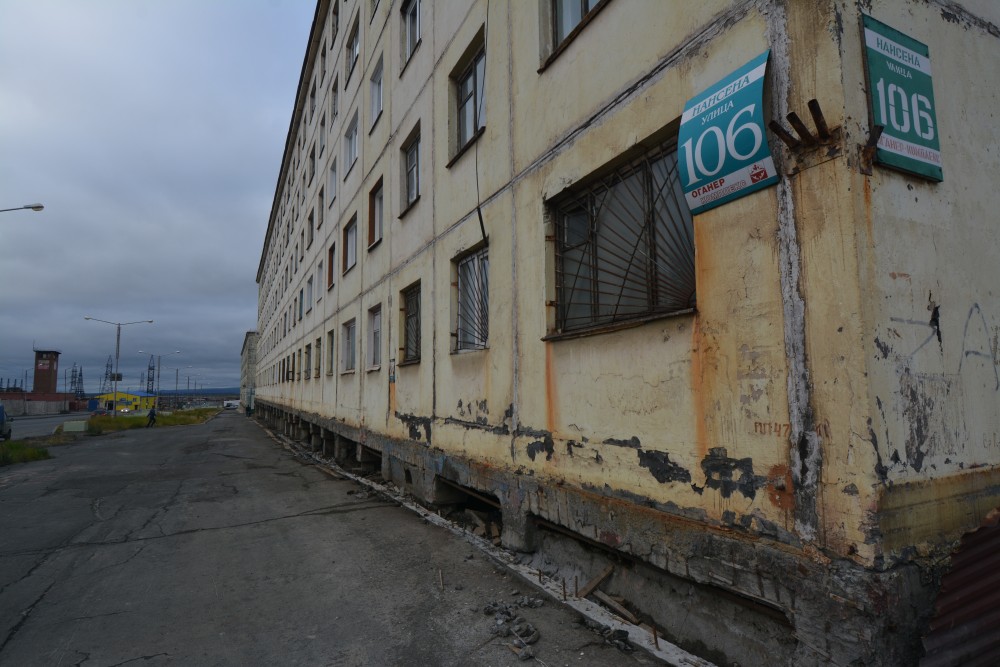Norilsk starts cooling the ground to preserve buildings on thawing permafrost
A 650-million-ruble program aims to stabilize the foundations fo some of the city's buildings.

Rising Arctic temperatures are causing permafrost to thaw, putting the world’s largest city built on frozen ground in deep trouble. Norilsk, the industrial city with 170,000 inhabitants on Russia’s Taymyr Peninsula is partly built on rock and partly on permafrost soil.
With shocking fast rise in temperatures inside the Arctic Circle, the thaw will have a devastating impact on those buildings built on the soil.
The Barents Observer has previously reported about a study predicting that urban infrastructure across the Russian Arctic could collapse within the next few decades.
In Norilsk, such dramatic impact on apartment blocks is already visible. Such as on the Nansen Street where the foundations to the five-floor apartment block 106 has severe cracks and the nearby pathway is bumpy.
Permafrost is the layer of frozen rock or soil that you find on the in the circumpolar North, including most parts of Siberia. The upper part of this soil that is now starting to thaw.
Regional authorities this week inspected the buildings in Norilsk and looked at needs for reconstruction, the official portal of the Krasnoyarsk Krai informs.
[Permafrost thaw is threatening homes and infrastructure in Siberia and the Russian Arctic]
News agency TASS reports that thermal stabilization of soils under 10 apartment buildings in Norilsk, whose foundations are under threat due to thawing permafrost, will be carried out in 2021-2024. Some 650 million rubles (€7.9 million) will be invested in the thermal stabilization program.
In 2019 and 2020, soil cooling systems were installed along the contour of two houses aimed to freeze the foundations in the ground. The system consists of a network of pipes through which the refrigerant circulates.
Russia’s Ministry of Emergency Situations issued a warning in 2016 that the extent of permafrost in Russia might be reduced by 25 percent by the year 2050 — and by up to 56 by the end of the century.
“This will imply growing risk for a breakdown of buildings, transport infrastructure and pipelines,” Acting Head of the Ministry’s Center of Emergency Monitoring and Prognosis, Konstantin Moskin said.
Norilsk is not the only urban area that faces dramatic impacts on infrastructure and buildings caused by permafrost thaw. Longyearbyen, on Norway’s Svalbard archipelago, sees houses sagging and the unstable ground forces people to move. About 250 houses in the center will be torn down and new buildings will be erected on far stronger metal foundations placed deeper into the ground.
Similar challenges are seen in parts of Alaska and northern Canada.